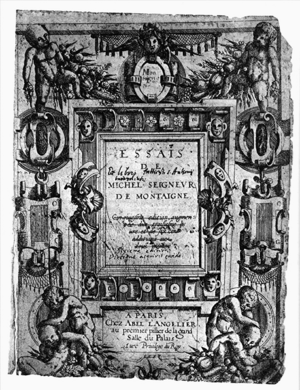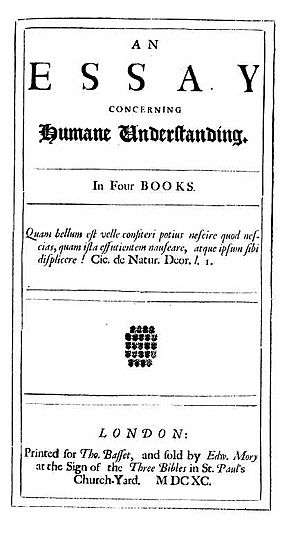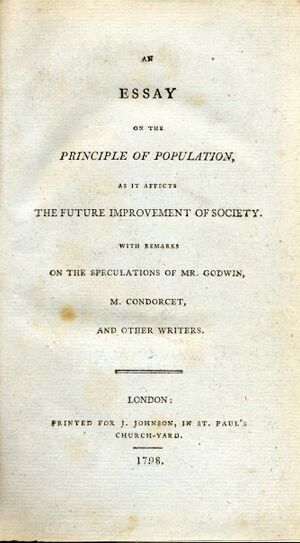Essay facts for kids
An essay is a piece of writing where an author shares their own ideas or arguments about a topic. It's a bit like a letter, a report, or even a short story, but with a clear focus on the author's thoughts. Essays can be formal, meaning they are serious, well-organized, and often longer. Or they can be informal, which means they are more personal, sometimes funny, and might explore ideas in a more relaxed way.

People write essays for many reasons. They can be about books, politics, or just everyday observations. Most essays are written in regular sentences and paragraphs (called prose). Sometimes, even poems are called essays, like those by Alexander Pope. While essays are usually short, some famous ones, like John Locke's An Essay Concerning Human Understanding, are very long books!
In many schools, especially in countries like the United States and Canada, writing essays is a big part of learning. Students learn how to write essays to improve their writing. Colleges often ask for essays when you apply. Essays also help teachers see how well students understand what they've learned in subjects like history or literature.
The idea of an essay isn't just for writing anymore. You can find "essay films" that explore ideas through movies. There are also "photo essays" that tell a story or explain a topic using a series of photographs, sometimes with captions.
Contents
- What is an Essay?
- Where Did Essays Come From?
- Different Kinds of Essays
- Explaining Ideas (Expository Essays)
- Describing Things (Descriptive Essays)
- Telling a Story (Narrative Essays)
- Arguing a Point (Argumentative Essays)
- Comparing and Contrasting
- Showing Causes and Effects
- Explaining a Process
- Reflecting on Experiences
- Sharing Personal Thoughts (Familiar Essays)
- Using Examples (Exemplification Essays)
- Discussing Different Views (Dialectic Essays)
- Organizing Information (Classification and Division)
- Essays in School
- Essays Beyond Books
- See Also
What is an Essay?
The word "essay" comes from the French word essayer, which means "to try" or "to attempt." So, an essay is like an "attempt" to share your thoughts on paper. A French writer named Michel de Montaigne was the first to call his writings "essays" in the 1500s. He saw them as his attempts to write down his ideas.

Over time, people have defined essays in different ways. One way to think of it is a piece of writing that focuses on one main topic.
A famous essay writer, Aldous Huxley, said that an essay is a way to "say almost everything about almost anything." He also noted that essays are usually short. Huxley explained that essays can explore ideas in three main ways:
- Personal stories: Some essays share the writer's own experiences and feelings.
- Facts and details: Other essays focus on facts, science, or politics, looking at information from the outside.
- Big ideas: A third type explores very broad, abstract ideas, without getting too personal.
The best essays often combine these different ways of thinking.
Where Did Essays Come From?
The First Essay Writer: Montaigne
The idea of the essay started with Michel de Montaigne in France. He began writing his "attempts" in 1572. His first book of essays, called Essais, came out in 1580. Montaigne kept writing and updating his essays throughout his life. His more than 100 essays are seen as the beginning of the modern essay we know today.
Essays in Europe
Montaigne's ideas were popular in France. His writings also reached England, where Francis Bacon was inspired by them.
Francis Bacon published the first English essays in 1597. He was the first to use the word essay for his writings in English. Later, the word essayist (someone who writes essays) was first used in 1609.
Other early English essayists included Sir William Cornwallis. In Italy, Baldassare Castiglione wrote about good manners. In Spain, Baltasar Gracián wrote about wisdom.
During the Age of Enlightenment in England, essays became popular in newspapers and magazines. Writers like Joseph Addison, Richard Steele, and Samuel Johnson used them to share their ideas. This is why sometimes an essay can feel like a newspaper article.
In the 1800s, many famous English writers, like William Hazlitt and Charles Lamb, wrote essays. Their essays were often about many different topics. Later, Ralph Waldo Emerson in America also became a well-known essayist. In the 1900s, writers like Virginia Woolf used essays to share their thoughts on literature and art.
In France, in the mid-1800s, writers like Sainte-Beuve wrote newspaper columns that were true essays.
Essays in Japan
Essays also have a long history in Japan. A type of essay called zuihitsu has been around for many centuries. These are often collections of ideas and thoughts that are loosely connected. Famous examples include The Pillow Book from around the year 1000, written by Sei Shōnagon. Another is Tsurezuregusa (1330), written by Yoshida Kenkō. Kenkō described his writings as "nonsensical thoughts" written in "idle hours," much like Montaigne.
Essays in China
In ancient China, a special type of essay called the eight-legged essay was used in important government exams. These essays focused on Confucian ideas and knowledge of classic texts. Students had to follow a very strict style. This style helped test their basic logic and writing skills. However, it also meant there wasn't much room for new or creative ideas.
Different Kinds of Essays
This section describes some common types of essays. You might use these in school or see them in books and articles.
Explaining Ideas (Expository Essays)
An expository essay aims to inform, describe, or explain a topic. It uses facts to teach the reader about something. These essays are usually written in the third person (using "it," "he," "she," "they"). They use formal language to discuss a person, event, or process. For example, an expository essay might explain how a volcano erupts or describe the life of a famous scientist.
Describing Things (Descriptive Essays)
Descriptive essays use lots of sensory details. These details help readers imagine what something looks, sounds, smells, tastes, or feels like. The goal is to create a strong impression or feeling for the reader. For example, a descriptive essay might paint a picture of a bustling market or a quiet forest.
Telling a Story (Narrative Essays)
A narrative essay tells a story. It uses elements like flashbacks (looking back in time) or flash-forwards (looking ahead). The story often builds up to an important moment or climax. The main focus is the plot or sequence of events.
Arguing a Point (Argumentative Essays)
An argumentative essay presents a clear argument or opinion about a topic. The writer uses research, facts, and strong logic to support their main idea. It often includes an introduction with a thesis statement (your main point). Body paragraphs provide evidence for your arguments. Sometimes, it even addresses and criticizes opposing ideas.
Comparing and Contrasting
These essays highlight how two or more things are similar (compare) and how they are different (contrast). You might compare two books, two historical events, or two types of animals. The essay needs a clear reason for comparison and specific points to discuss.
Showing Causes and Effects
A cause and effect essay explores why something happened (the cause) and what resulted from it (the effect). It connects events in a chain, showing how one thing leads to another. For example, it might discuss the causes of pollution and its effects on the environment.
Explaining a Process
A process essay explains how to do something or how something works. It often presents steps in a clear, chronological, or numerical order. Think of it like a set of instructions, but written in a descriptive way.
Reflecting on Experiences
A reflective essay describes a real or imagined event or memory. The writer then shares their personal thoughts and feelings about what it means. It's not just describing; it's also thinking deeply about the experience and how it changed the author.
Sharing Personal Thoughts (Familiar Essays)
A familiar essay is written in a friendly, personal tone, almost like talking to one reader. The writer shares thoughts about themselves and specific topics. These essays often blend personal feelings with thoughtful ideas.
Using Examples (Exemplification Essays)
An exemplification essay uses many examples to support a general idea or statement. These examples should be relevant, clear, and believable. They help make the writer's point stronger and easier to understand.

Discussing Different Views (Dialectic Essays)
In a dialectic essay, often used in philosophy, the writer presents an argument. Then, they consider a counter-argument (an opposing view). Finally, they respond to the counter-argument with a new, stronger point. This shows a broad understanding of the topic.
Organizing Information (Classification and Division)
Classification means grouping similar things into larger categories. Division means breaking a large topic into smaller, more specific parts. These essays help organize information clearly. For example, you might classify different types of sports or divide a country into its regions.
Essays in School

In many countries, essays are a big part of schoolwork. Students learn how to write structured essays to improve their writing skills. Colleges often use essays to help choose new students. Essays also help teachers see how well students understand what they are learning.
In high school and college, essays are used to test your knowledge. You might be asked to explain, comment on, or evaluate a topic. Some courses require students to write long essays over several weeks. Exams often include short essays that you write in a few hours.
Academic essays are usually more formal than personal ones. They present the writer's views in a logical and factual way. It's often best to avoid using "I" or "my" in these essays. Longer academic essays (often 2,000 to 5,000 words) might start with a summary of what others have written on the topic. This is called a literature review.
Most schools require you to list all your sources (facts, quotes, ideas from others) in a bibliography at the end. This helps readers see where your information comes from. It also shows how well your arguments are supported by evidence. Academic essays help you learn to organize your thoughts and show your understanding.
Sometimes, a challenge for schools is when students try to cheat. They might buy essays from an "essay mill" instead of writing their own. This is called plagiarism. Schools use special software to check for plagiarism. They might also ask students to talk about their essays to make sure they wrote them.
Essays Beyond Books
Film Essays
A film essay is a movie that explores a theme or idea, rather than just telling a story. It often mixes styles from documentaries, fiction, and experimental films. Film essays might include a narrator sharing their thoughts, making the filmmaker's personal view clear.
Filmmakers like Chris Marker, Michael Moore, and Errol Morris have made famous essay films. Jean-Luc Godard also describes some of his recent work as "film-essays." These films often explore ideas in a creative and unique way.
Video Essays
Video essays are a newer type of media, very popular on platforms like YouTube. They are similar to film essays but are often created for online viewing. Some video essays are long and detailed, diving deep into research on a topic. Others are more like argumentative essays, supporting a single point throughout the video.
Music Essays
In music, some composers have created "Essays for Orchestra." For example, Samuel Barber wrote pieces with this title. In these works, the music itself guides the listener's understanding, rather than a specific story.
Photo Essays
A photographic essay tells a story or covers a topic using a series of photographs. These photos might have captions or short texts. Photo essays can be viewed in a specific order or in any order the viewer chooses. They often focus on a certain issue or capture the feeling of a place or event.
Art Essays
In the visual arts, an essay can be a preliminary drawing or sketch. Artists make these as a "trial" or "attempt" to plan the composition of a final painting or sculpture.
See Also
 In Spanish: Ensayo para niños
In Spanish: Ensayo para niños
- Abstract (summary)
- Body (writing)
- Book report
- Essay thesis
- Five-paragraph essay
- Introduction
- List of essayists
- SAT Essay
- Schaffer paragraph
- Treatise


